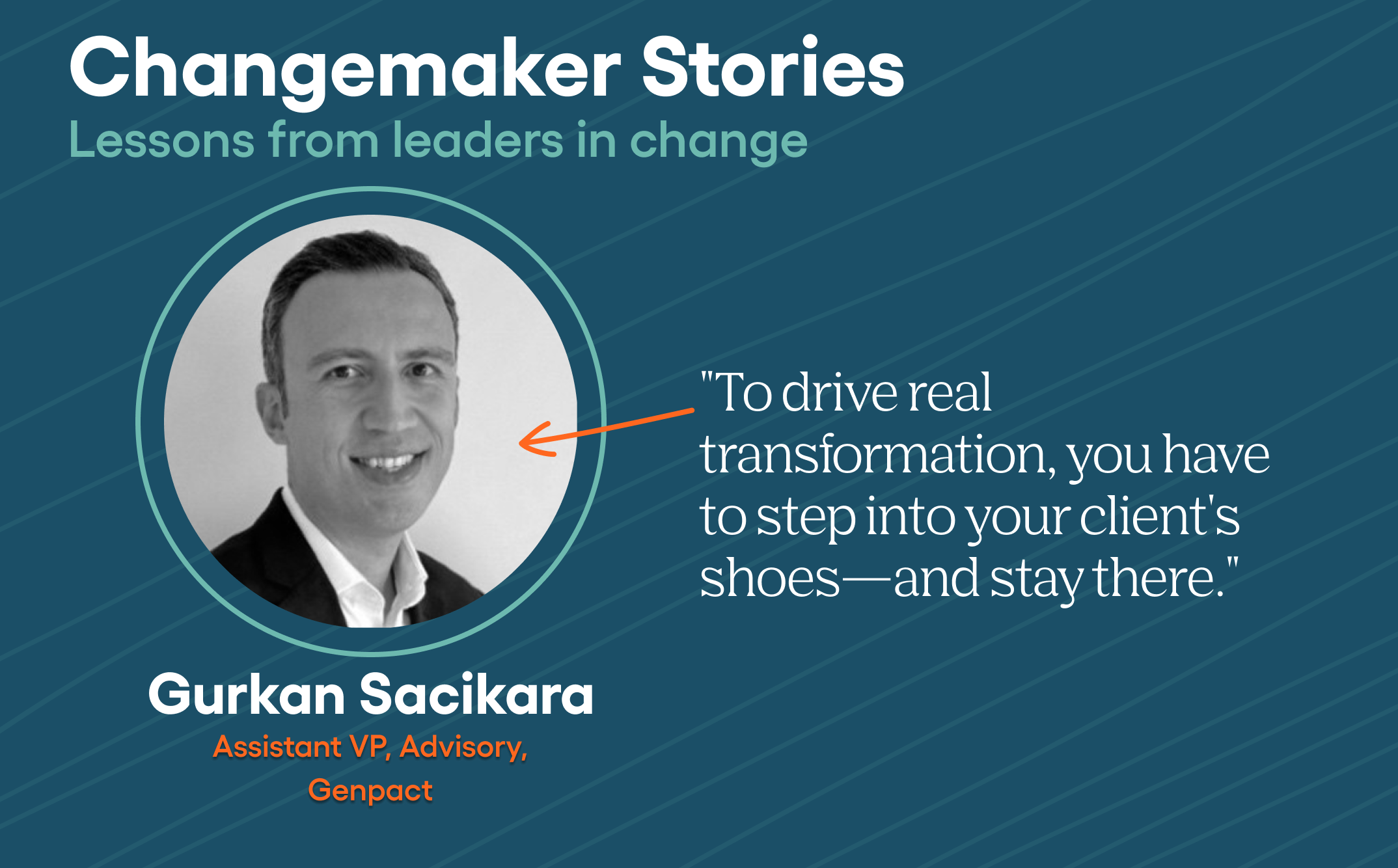

Welcome to Changemaker Stories from LOCAL – an ongoing series of personal interviews with leaders driving change across every industry and discipline. Because change shouldn’t mean going it alone.
Gurkan Sacikara has spent over two decades guiding companies through complex transformations—across industries, continents, and technologies. He combines business strategy, operations, AI, and digital tools to help clients rethink what’s possible. But the foundation of his work is timeless: listen deeply, understand fully, and meet each stakeholder where they are.
His approach to change management goes beyond frameworks. Gurkan believes that transformation only works when you take time to understand the culture, the resistance, and the individual personas driving the business. The goal isn’t just to deliver results—it’s to do so in a way that builds trust, unlocks buy-in, and makes the change actually stick.
Change management is the thread that runs through every successful transformation. Whether it’s a business model shift or a digital reinvention, the hardest part is never the tech—it’s the people. And every stakeholder sees change differently. That’s why I start with deep persona mapping. Who’s excited? Who’s skeptical? Who needs more detail before they can trust the process? I tailor communication and engagement to each person. It’s about alignment, not just delivery.
Culture matters—and it varies more than you think. A transformation that works in one region may fail in another if you don’t understand the underlying dynamics. Culture shapes how people respond to change, how decisions get made, and how fast teams can adapt. I’ve learned to assess culture early, especially in global organizations, so we can set the right pace and avoid blind spots.
In large companies, bureaucracy is often the biggest barrier to change. Big, multinational organizations tend to over-index on alignment at the top before anything moves. That can delay momentum. But it’s also a necessary part of the process. I support that alignment with patience and structure—making sure senior stakeholders feel informed, heard, and prepared before we push forward.
The unsung heroes of transformation are the change agents. I always look for the connectors—people with influence across functions, regardless of job title. They’re often embedded deep in operations, but they have the relationships and credibility to bring others along. I identify them early and bring them into the process as advocates. They can move change across silos better than anyone.
Communication isn’t just a nice-to-have—it’s the engine of engagement. You need a layered strategy that speaks differently to executives, managers, and frontline staff. If people feel informed, they feel less stressed—and more prepared to adapt. Even if the change is difficult, knowing what’s coming helps people get ready. And transparency builds resilience.
Resilience is what separates companies that adapt from those that stall. With geopolitical shifts, market volatility, and AI disruption, organizations need operating models and tech infrastructure that can flex. That agility isn’t just about tools—it’s about mindset. During the pandemic, I saw clearly that the companies who could manage data well and simulate fast-moving scenarios were the ones who bounced back strongest.
If I had one piece of advice for the next generation of change leaders, it’s this: go deeper.
“To drive real transformation, you have to step into your client’s shoes—and stay there.”
Don’t just read the brief. Don’t stop at surface-level pain points. Take time to engage across the organization—to listen, ask questions, map dynamics. Understanding your client isn’t a step in the process. It is the process. Real change starts when you see the business through their eyes.
And that’s how trust is built—one conversation, one insight, one step at a time.